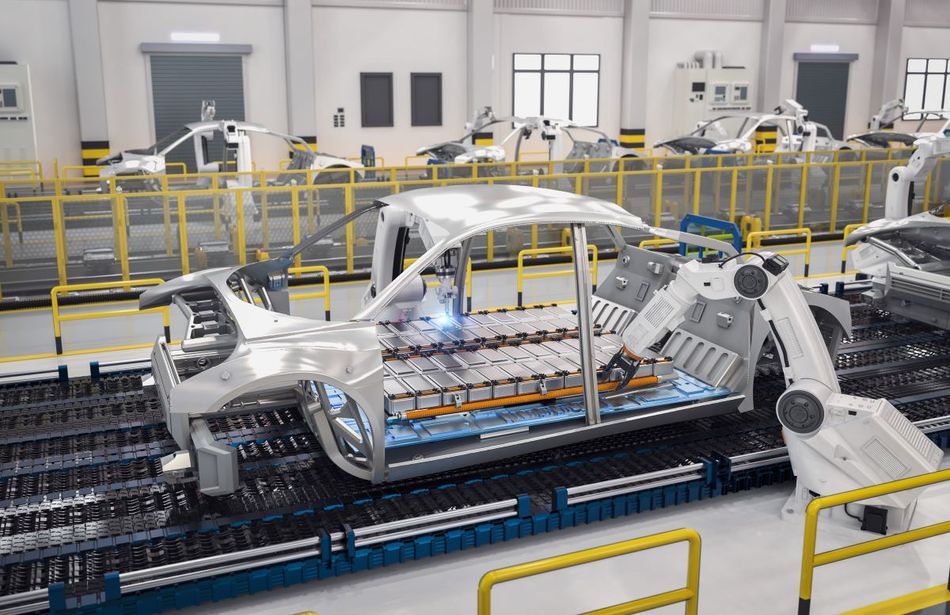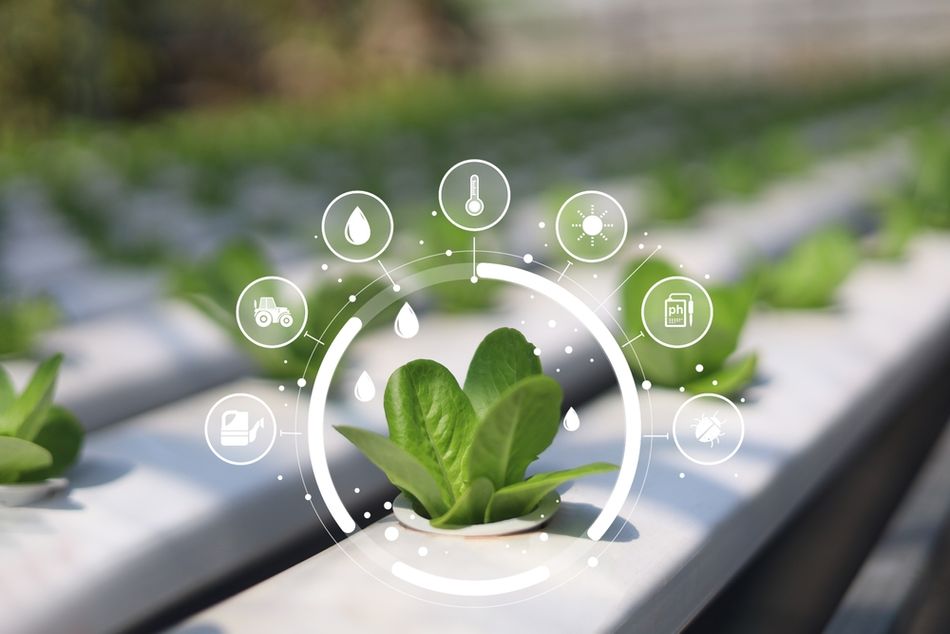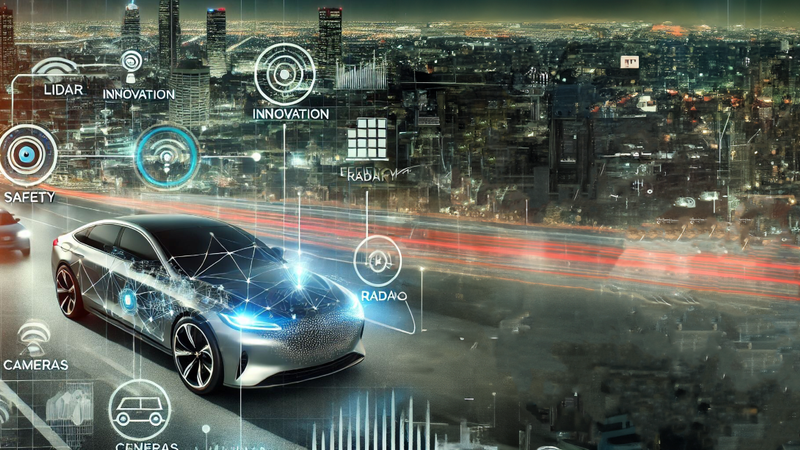Next-Generation Sensors Built from the Intersection of Collaboration, Sustainability, and Innovation: A Conversation with ScioSense's CEO
We sit down with Sciosense CEO, Stefan Raible to discuss the future of sensors and how collaboration is key to engineering success.
In the specialized field of sensor technology, ScioSense has carved out a significant niche under the guidance of its CEO, Stefan Raible, a seasoned expert with a background in physics and a passion for environmental and chemical sensors. Starting with a small startup launched with colleagues from the University of Tübingen, he has navigated the company's transformation into a small but mighty player in the sensor industry. This interview explores his insights into the evolution of sensor technology, particularly in the automotive sector, and his strategic vision for ScioSense’s future in addressing complex technological challenges.
Wevolver: Can you introduce yourself and share your journey to becoming the CEO of ScioSense and how your background in environmental and chemical sensors influences your leadership approach?
Stefan Raible: With an academic background in physics, I co-founded a company focused on environmental and chemical sensors in 2001 with colleagues from the University of Tübingen. The company has since evolved into what is now known as ScioSense. I have consistently engaged in the field of sensor technology due to its potential impact on daily life. Before becoming CEO of ScioSense, I held positions within the sensor industry at AppliedSensor as CTO and CEO, and at as Osram Business Line Manager and Engineering Fellow, where I focused on R&D, product development, and strategic leadership.
Wevolver: Reflecting on the evolution of automotive sensors in the past decade, could you discuss the cutting-edge innovations you anticipate will drive the sector forward in the next ten years?
Stefan Raible: The past decade has seen significant advancements in sensor capabilities, particularly in areas such as autonomous driving and e-mobility. Environmental sensors play an important role, for example, in optimizing HVAC system performance in vehicles, thereby prolonging range, or by supporting ADAS systems with flow sensors to ensure that all sensors remain clean and operational. Additionally, environmental sensors have become smaller, more capable, and cheaper. This enables monitoring of air quality, dew point, battery safety, and other relevant measures around vehicle operation.
Looking ahead, multi-sensor fusion, AI-driven data processing, and enhanced connectivity are expected to redefine automotive sensors. The integration of environmental sensing will support this development in various ways.
Wevolver: What sets ScioSense apart in its approach to sensor design and development, particularly when pioneering new technologies for the future?
Stefan Raible: ScioSense offers scalable, customer-oriented solutions for environmental and flow sensing that aim to foster a more sustainable future. Our sensors are designed to enhance safety, prevent losses, and improve efficiency. Notable examples include ultrasonic flow sensors for detecting water loss, dew point sensors for optimizing HVAC performance, and air quality solutions for enabling demand-controlled ventilation to reduce energy consumption. These innovations are driven by our skilled international team, which collaborates seamlessly across Italy, Germany, the Netherlands, and China. We work together with customers to define the next product, so we try to have a roadmap in alignment with our key customers.
Wevolver: How do ScioSense's sensors make vehicles smarter, safer, and more efficient, particularly in areas like climate control, air quality monitoring, and autonomous systems?
Stefan Raible: Our sensors enhance vehicle intelligence by providing real-time, high-accuracy data for various applications. In climate control, they optimize energy usage by adapting HVAC systems based on occupancy and external conditions. Our sensors detect pollutants and adjust ventilation for air quality monitoring, improving passenger comfort, health, and energy consumption.
In battery systems, our sensors can detect thermal runaway incidents early and give warnings. In autonomous systems, our flow, environmental and gas sensors provide crucial situational awareness, ensuring safer and more reliable vehicle operations.

Wevolver: Beyond automotive uses, ScioSense sensors have significant impacts in environmental monitoring and smart home applications. Could you explore how these technologies are setting new standards and expectations in these fields?
Stefan Raible: ScioSense develops sensors that measure air quality, temperature, and humidity with high accuracy. In smart homes, these sensors facilitate intelligent climate regulation and pollutant detection, contributing to healthier indoor environments. These technologies provide real-time sensor data for better well-being.
Wevolver: Sustainability is a growing priority in technology development. How is ScioSense addressing this challenge while continuing to innovate in sensor technology?
Stefan Raible: At ScioSense, sustainability is an important concern. We emphasize energy-efficient applications and eco-friendly manufacturing processes that avoid waste. Our sensors are specifically designed to minimize power consumption while maintaining high performance, thereby reducing the overall environmental impact of the systems they integrate with.

Wevovler: What are the primary challenges and most exciting opportunities ScioSense encounters in pushing the envelope of sensor performance over the next decade?
Stefan Raible: The evolving geopolitical landscape demands new supply chain strategies and faster development cycles. Key challenges include balancing miniaturization with performance by creating compact, power-efficient sensors and integrating them into complex digital ecosystems. However, opportunities like AI-driven processing, self-calibrating sensors, and expanded IoT connectivity promise innovations in healthcare, industrial monitoring, and smart cities.
Wevolver: How does ScioSense engage and collaborate with partners, clients, or research institutions to accelerate advancements and innovation in sensor technology?
Stefan Raible: Collaboration and customer focus drive ScioSense’s success. We work with automotive OEMs, industrial partners, and research institutions to co-develop next-generation sensor solutions. Our joint development programs, innovation platforms, and strategic partnerships help our sensors meet industry demands and stay ahead of technological advancements.
Wevovler: As CEO, what is your long-term vision for ScioSense? Where do you see the company in the global sensor industry landscape in the next five years?
Stefan Raible: My vision for ScioSense is to establish itself as a leading entity for high-performance flow, environmental, and automotive sensors, renowned for our innovation, reliability, and commitment to sustainability. In the forthcoming years, I foresee an expansion of our market presence through strategic partnerships, diversification of our product portfolio, and a significant contribution to the advancement of smart sensing technologies. By maintaining a focus on continuous research and development, coupled with strategic collaborations, we aim to remain at the forefront of intelligent sensor technology.
Wevolver: What advice would you offer to aspiring innovators looking to make a meaningful impact in the field of sensor technology?
Stefan Raible: Innovation in sensor technology requires a combination of technical expertise, creativity, and a problem-solving mindset. My advice to aspiring innovators is to stay curious, embrace interdisciplinary collaboration, and always prioritize user needs. The most impactful breakthroughs come from those who dare to push the limits of what’s possible while maintaining a clear focus on real-world applications. Persistence and a willingness to iterate on ideas will be key to making a lasting impact in this exciting field.
Final thoughts
ScioSense’s contributions to sensor technology are deeply embedded in a commitment to precision, efficiency, and sustainability. The CEO’s strategic approach, rooted in rigorous R&D and collaborative innovation, aims to expand how sensors enhance our interaction with environments. For those engaged in technology development, Stefan’s advice underscores the importance of a meticulous, user-centric approach to innovation and perseverance in bringing transformative solutions to market.

